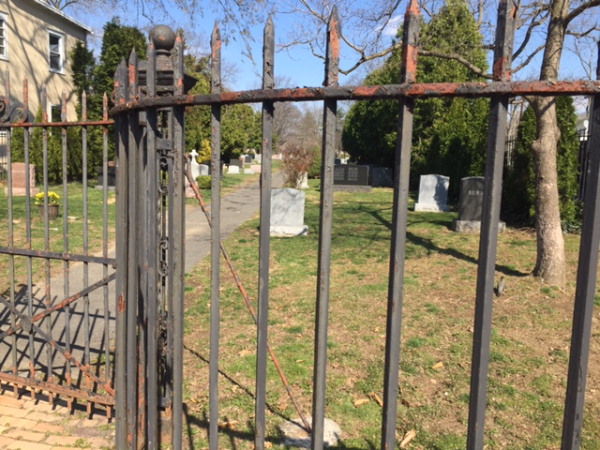By Philip Sean Curran, Staff Writer
Princeton should make a historic district out of a formerly blacks only section of the Princeton Cemetery that tells the story of the community’s segregated past, said a town official on Tuesday.
Councilwoman Jo S. Butler approached the municipal Historic Preservation Commission on Monday with the idea, one that she said she hopes the all-volunteer board will consider and research further. She said “the story of segregation” in Princeton is “memorialized in that cemetery,” located in the Witherspoon-Jackson neighborhood and owned by Nassau Presbyterian Church.
Beginning in 1807, the “colored section” of the cemetery was set aside for the black residents of the community, said local historian Shirley Satterfield on Tuesday. That policy of maintaining segregated burial grounds continued into the 20th century, she said.
The timing of Ms. Butler’s proposal comes with the council poised to designate the neighborhood, minus the cemetery, a historic district. The aim is to protect a section of town that has undergone a demographic change in the past quarter century and where homes have been razed and larger ones built in their place.
A once thriving and predominately black neighborhood has evolved to include large numbers of immigrants from Central America. At the same time, properties are being redeveloped amid concerns about the construction of larger homes that are out of scale with the rest of the streetscape.
Interested in combating gentrification of the neighborhood, council will apply new protections so that a builder would have to seek permission from the Historic Preservation Commission before being allowed to demolish a home or other structure. Ms. Butler supports designating the neighborhood, although she says more work will need to be done, including updating the zoning.
As for the cemetery, Ms. Butler said the burial ground helps tell a story about Princeton’s past that she would want to preserve. She believed it was a fallacy that “nothing can happen” to cemeteries. Indeed, notable places in New York, including Bryant Park and City Hall, once were burial grounds.
Julie Capozzoli, chairwoman of the HPC, said Tuesday that the commission’s consultant, Bob Wise, last year advised the board that the cemetery is protected and not under any “imminent danger” of development.
For his part, the Rev. David Davis, pastor of Nassau Presbyterian Church, had no comment Tuesday.
Ultimately, the Princeton Council would have to vote to create a historic district.
Ms. Satterfield said there are notable members of the black community buried there. They include Walter Harris, a former Princeton Borough Police officer shot and killed in 1946; pianist Donald Lambert; Bryan Van Zandt Moore, the first black member of the Princeton Board of Education; Katherine Montgomery Edwards, the first black woman on the school board; and Christine Moore Howell, who owned a hair salon on Spring Street.

